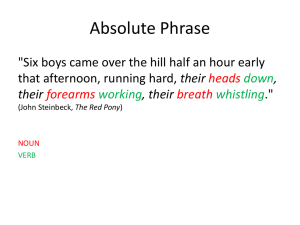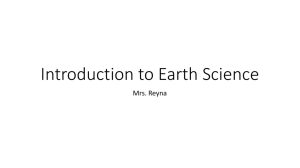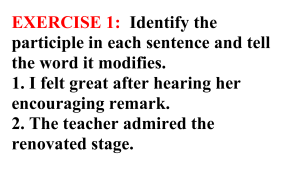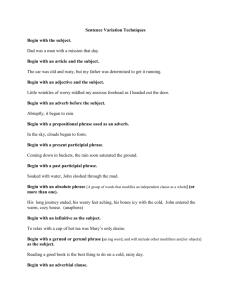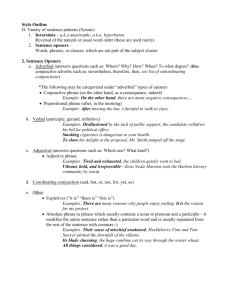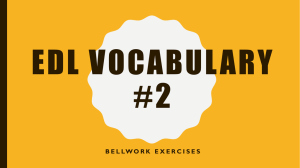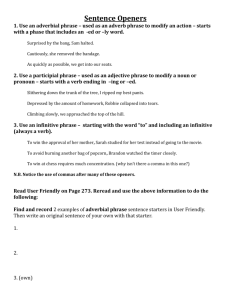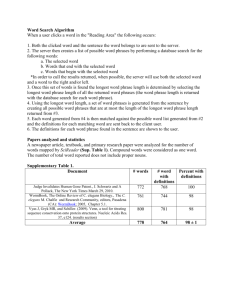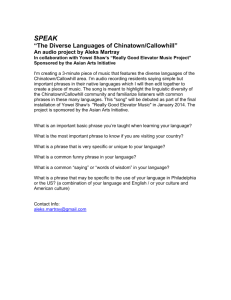Absolute Phrases Do Now #52 (2/11 & 2/12) An absolute phrase
advertisement
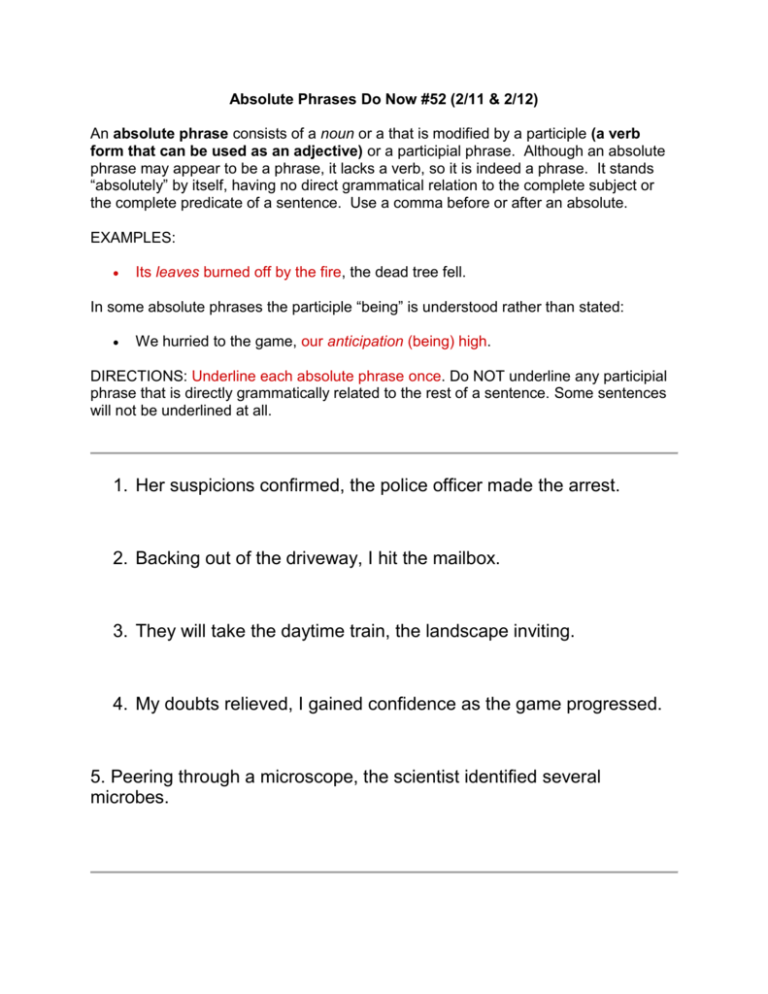
Absolute Phrases Do Now #52 (2/11 & 2/12) An absolute phrase consists of a noun or a that is modified by a participle (a verb form that can be used as an adjective) or a participial phrase. Although an absolute phrase may appear to be a phrase, it lacks a verb, so it is indeed a phrase. It stands “absolutely” by itself, having no direct grammatical relation to the complete subject or the complete predicate of a sentence. Use a comma before or after an absolute. EXAMPLES: Its leaves burned off by the fire, the dead tree fell. In some absolute phrases the participle “being” is understood rather than stated: We hurried to the game, our anticipation (being) high. DIRECTIONS: Underline each absolute phrase once. Do NOT underline any participial phrase that is directly grammatically related to the rest of a sentence. Some sentences will not be underlined at all. 1. Her suspicions confirmed, the police officer made the arrest. 2. Backing out of the driveway, I hit the mailbox. 3. They will take the daytime train, the landscape inviting. 4. My doubts relieved, I gained confidence as the game progressed. 5. Peering through a microscope, the scientist identified several microbes.
